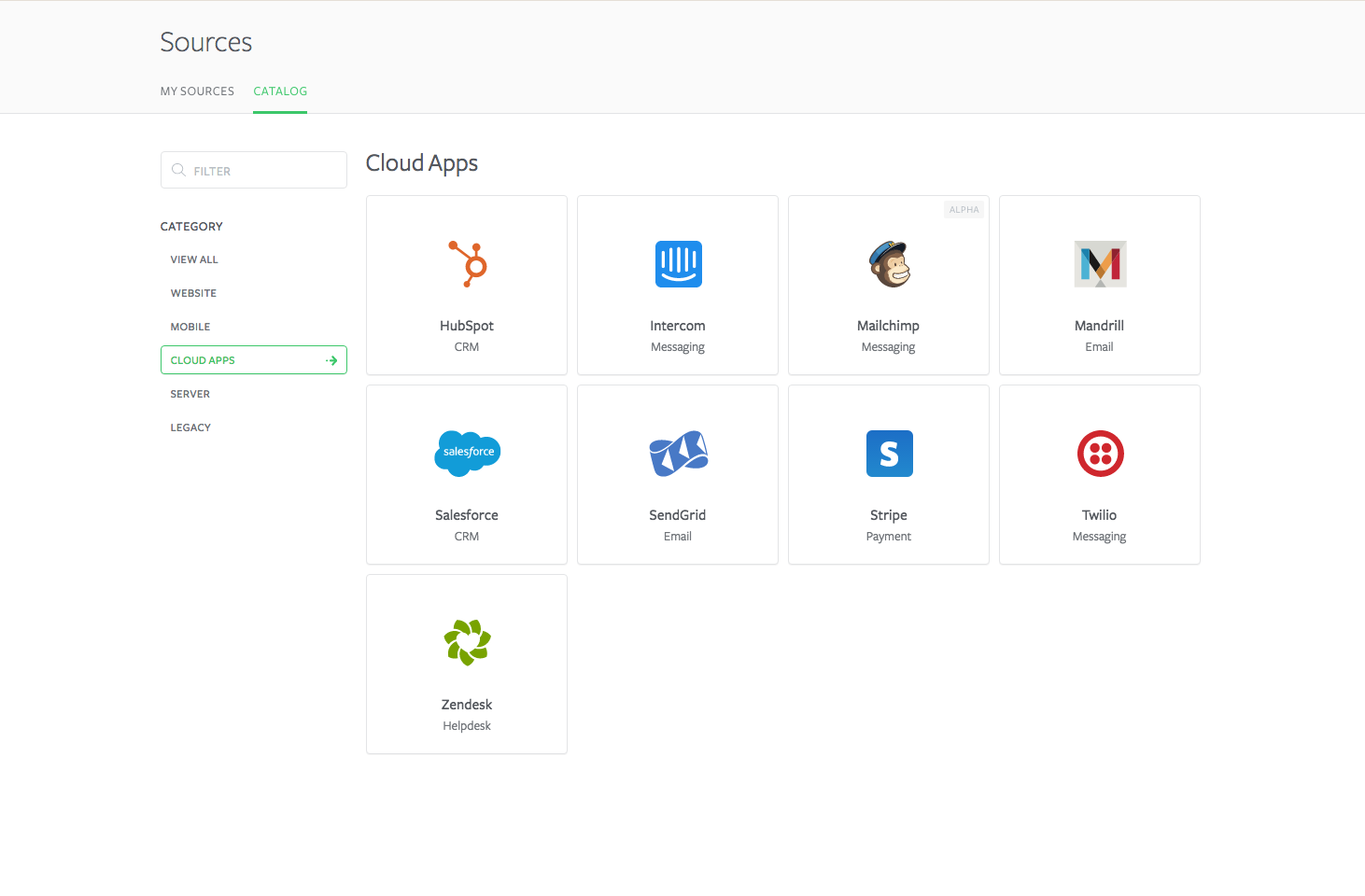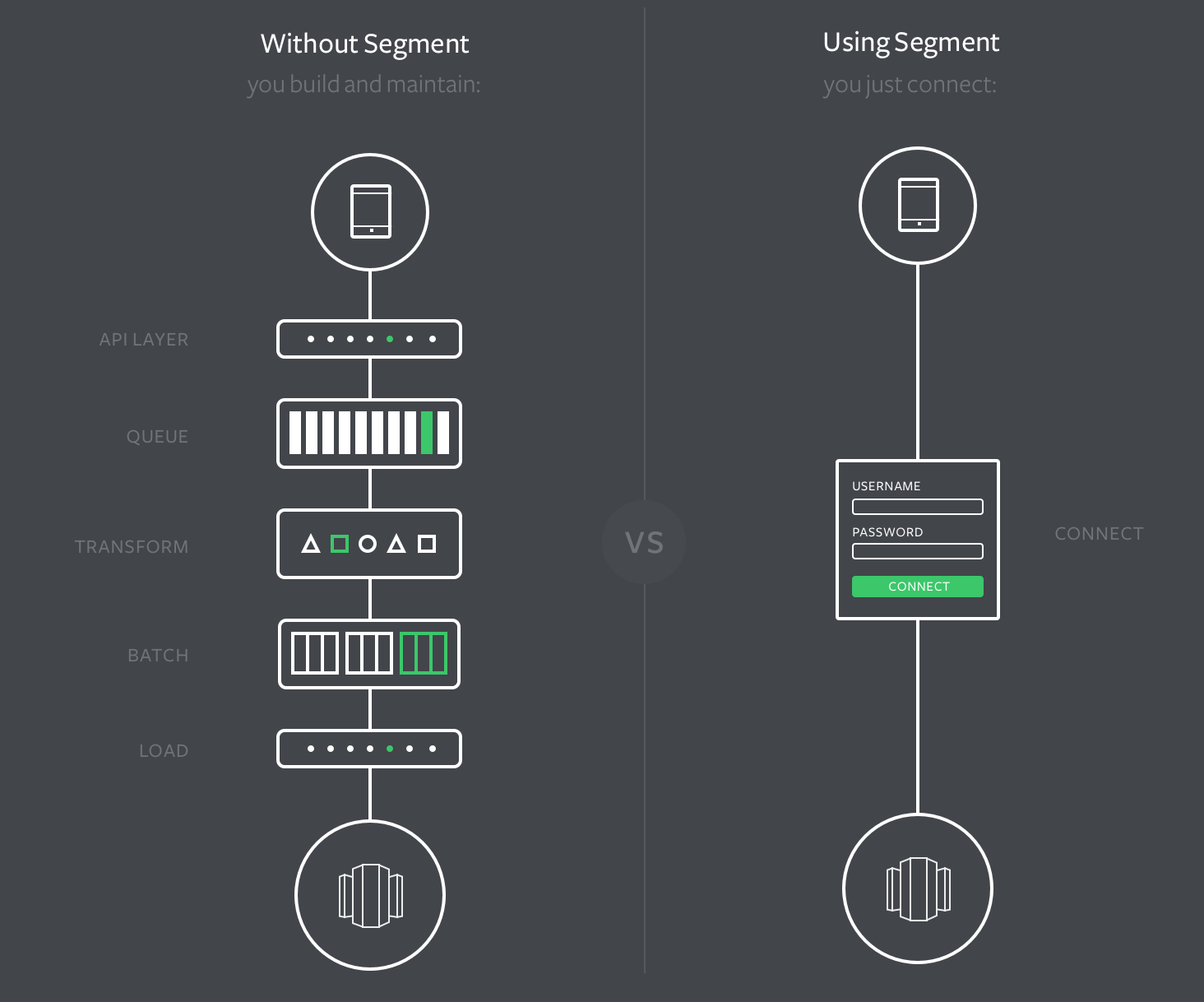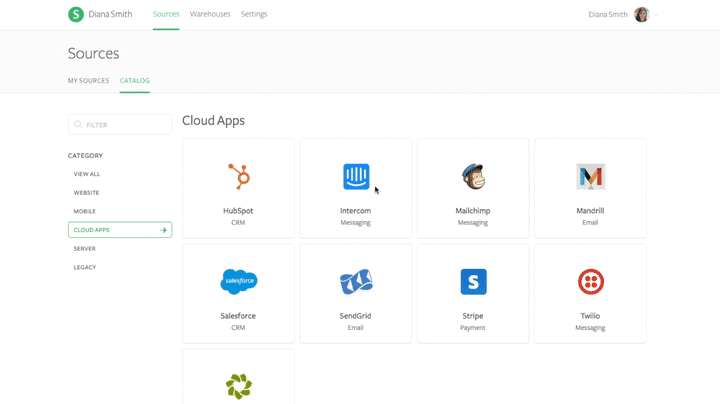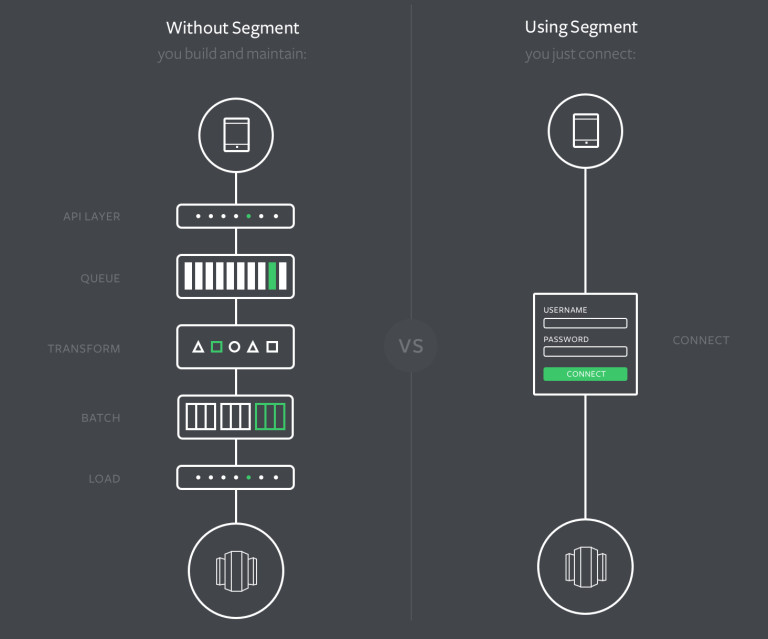This article was sponsored by Segment. Thank you for supporting the sponsors who make SitePoint possible.
Let’s talk about data. Everyone knows that data is a beautiful thing and that analyzing data allows you to make intelligent decisions about how to most effectively serve your customers, increase revenue, and grow your business.
But there’s a good chance that most of your data is shy. It doesn’t like to play with other data.
You’ve got data from Salesforce, Zendesk, Stripe, SendGrid, and a host of other services. And while each of these applications may provide decent out-of-the-box reporting, it’s difficult to get a clear, complete picture of how customers interact with your brand when the data is siloed in 8 different applications. You can’t get a clear picture of the relationship between sales conversions and product usage, or the relationship between your email marketing efforts and your customer service interactions. You can’t get a holistic picture of what is happening in your business.
Segment Sources allows you to solve the perennial problem of siloed data. It allows you to pull data from a vast number of disparate sources, integrate that data into a single warehouse, and then use a BI tool to view detailed analytics from that data.

This solution is incredibly simple, and will save you months worth of time and effort. Without Segment Sources, you would be required to build and maintain an API layer, queue, transformation, batch, and load processes. You would have to navigate the idiosyncrasies of various systems and data structures, and when something changes, you have to manually update everything. Engineers would rather work on the product. Analysts would rather explore the data then wrangle it.

With Segment Sources, you can connect all your data with a few simple clicks. Absolutely ZERO coding required. Simply enter your API keys and your up and running!

Companies like Trunk Club, New Relic, Product Hunt, and Instacart are using Segment Sources to integrate data from apps like Salesforce, Intercom, Stripe, Zendesk, Twilio, and HubSpot.
If you don’t have a data warehouse, Segment can host and manage one for you. Additionally, Segment partners have pre-built dashboards for common use cases.
With a fully managed schema, Segment will automatically add new rows and tables when you track events, and compressed data types are utilized to keep your cluster small and your queries fast.
More and more, businesses are beginning to understand that interactions in email and support channels affect long-term customer engagement, retention, and revenue. Segment Sources allows you to monitor and analyze your entire customer experience from end to end. Rather than spending hours trying to compare reports across various applications, you can see all your data in one, organized location.
And with Segment processing more than 50 billion API calls per month for thousands of customers, Segment is built to scale.
Segment Sources has extremely competitive pricing, starting with FREE accounts.
You have loads of data available to you in your business. The question is, can you actually read it in a way that empowers you to make intelligent decisions about your business? Segment allows you to do just that.
 Stephen Altrogge
Stephen AltroggeStephen Altrogge is a conversion copywriter based in Tallahassee, Florida. You can find out more about him on his site copyswagger.com.



